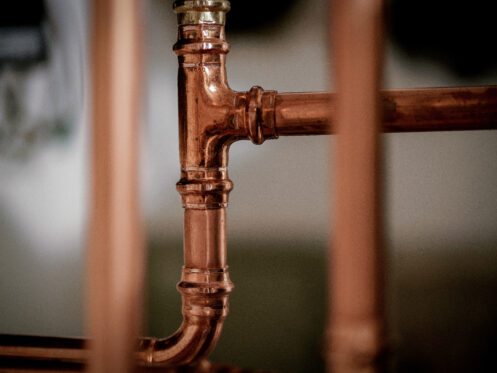What are your pipes made of? The answer to that question determines a great deal about the stability of your plumbing system. People should always be aware of basic questions about their home’s structure, but most people don’t think about their plumbing unless there’s an issue.
You can save yourself a great deal of money and time if you call 3 Mountains Plumbingto do a routine check on your pipes today. Our experts can tell you the approximate age and integrity of your plumbing in a consultation on the day of your call. All they need to do is take a look! The difference between piping materials is huge because the popularity of different pipe types has changed several times over the past 50 years alone! The most common and popular material nowadays is PEX piping: it’s a durable plastic that doesn’t corrode with age. We’ll use this blog to tell you about the other types of pipes and what their weaknesses are.
- Cast Iron– As early as 30 years ago, cast iron pipes were very popular with plumbers; many homes in the Portland area still have them. However, these pipes aren’t installed so much anymore, mainly because we’ve found that they tend to rust and corrode over time. The corrosion leads to sediment build-up, and flow capacity is lost.
- Orangeburg– This type of piping hasn’t been popular since the 50s, but you’d be surprised by how many homes we still see that haven’t been updated since then! If your sewer system is made with Orangeburg, that means it’s essentially made of compressed wood and paper pulp. It was immensely cheap and, after WWII, that’s what people needed. But now we know that Orangeburg tends to become deformed under pressure, and it severely deteriorates within a few decades.
- Terra Cotta– Some plumbers will still install these clay pipes, as they are tremendously sturdy and known to last for decades. However, they have one major design flaw: they come in 4-foot length segments (approximately) and connect at joints. These joints tend to make the pipes vulnerable to tree root intrusion and leaks.
Would you like to know what your pipes are made of? Call the 3 Mountains Plumbing experts for drain maintenance service today, and we’ll give you the options you need.

